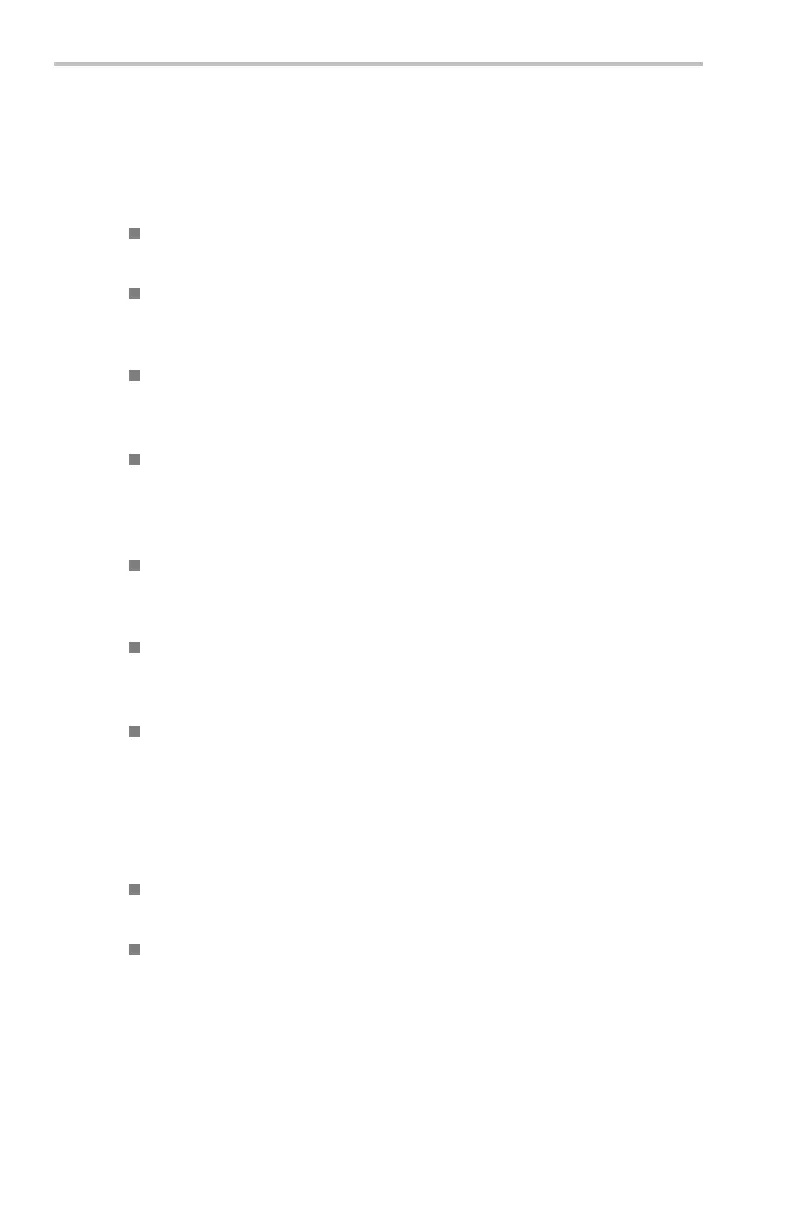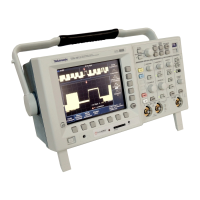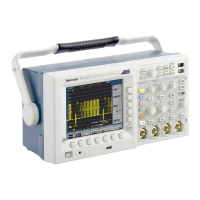Reference
Thresholds. Bo
th Pulse and Logic types trigger the oscilloscope when one or two
signals a re logically true. To determine whether a signal is true or false, you must
set a signal reference point that determines whether a signal is in one of two
states. You set this reference point by specifying a threshold voltage level for each
trigger signal. Crossing the threshold level toggles the state value of that signal.
Logic State. The actual state (true o r false) of a signal depends on how you
define its signal logic s etting, which can be either high-true or low-true. Defining
asignal
as high-true (H) means that signal levels above (more positive than)
the threshold level are true, and signal levels below (more negative than) the
threshold level are false.
A low-true (L) logic setting is just the opposite. Defining a signal as low-true
means that signal levels below (more negative than) the threshold level are true,
and signal levels above (more positive than) the threshold level are false. Low
logic effectively inverts the signal.
Defining the logical state of a signal lets you use Boolean logic to evaluate when a
condition is true for two signals.
Boolean Logic. The signal logic (threshold level and high-true/low-true logic)
defines which part of a waveform cycle is true or false. You then use Boolean
logic to evaluate o r compare the logic of two signals as part of a trigger condition.
98 TDS3000C Series Oscilloscope User Manual

